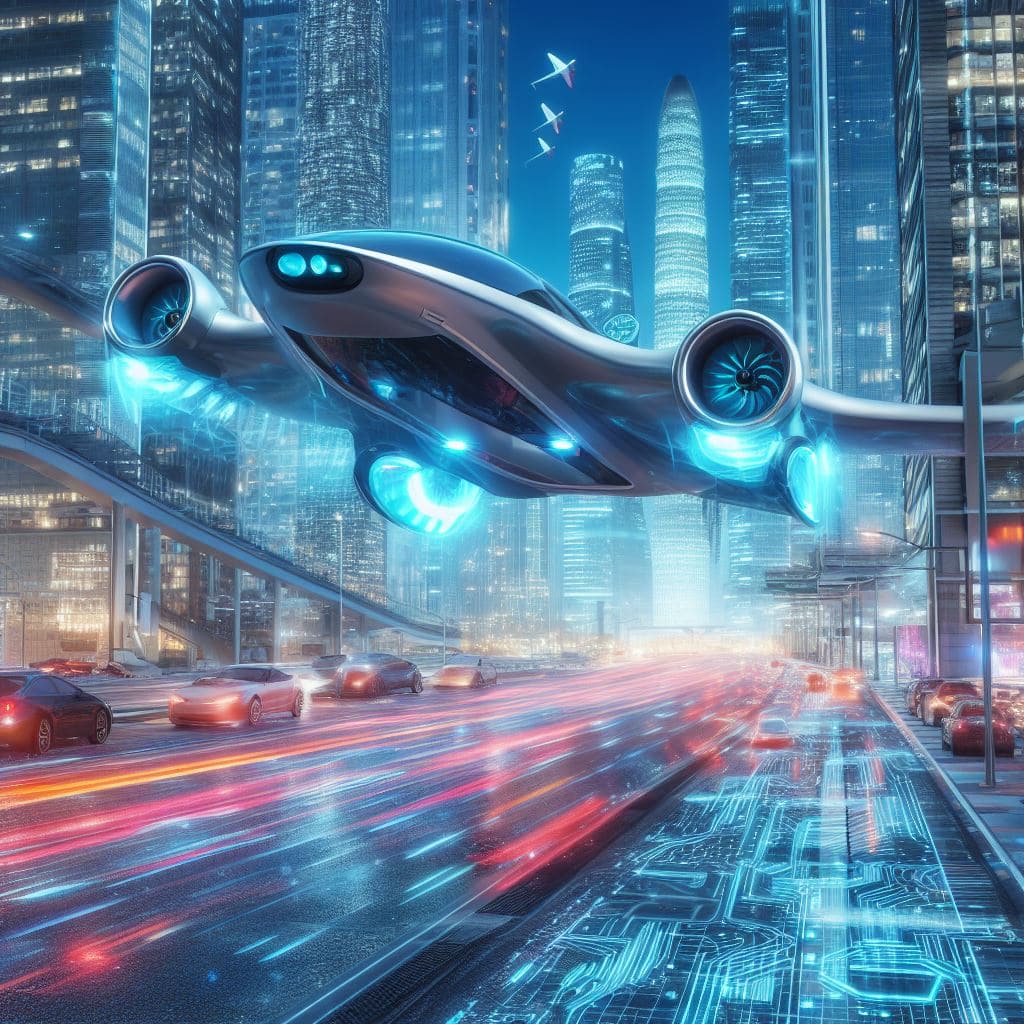In the pantheon of futuristic visions, flying cars have long been a bright beacon of a technologically advanced society—a symbol synonymous with cutting-edge innovation and the synergetic blend of sky and road. The extraordinary concept of flying cars, which once resided solely within the pages of science fiction novels and the colorful celluloid of classic movies, is now edging closer to being part of our everyday lives. This post delves into the enigmatic world of flying cars, examining their evolution, the technology behind them, and their transformative potential for our future.
The Evolution of Flying Cars
The lore of cars that can soar through the skies dates back to the early 20th century when the automobile and aviation industries were in their nascent stages. The dreamers of the day envisioned a world where the freedom of the open road and the expanse of the heavens could be fused, offering unparalleled mobility. Over the decades, several prototypes and designs have attempted to turn this dream into a reality, yet they often stumbled upon the complexities of aerodynamics, safety regulations, and technological limitations.
From Fiction to Function: The Journey
“Chitty Chitty Bang Bang,” “Back to the Future,” and “The Jetsons” are three bastions of popular culture that have kept the flame of flying cars alive in the collective imagination. The iconic DeLorean-based time machine propelled the idea into one resonating with the masses, while animated series like “The Jetsons” made us believe flying cars would be an everyday convenience by the year 2062. Despite these glamorous portrayals, the reality of creating a safe, reliable, and practical flying vehicle proved to be an arduous task.

The Technology Behind Flying Cars
Recent advancements in battery technology, materials science, and drone technology have significantly propelled the flying car industry forward. Let’s explore the primary technological facets.
A Leap in Energy Storage
The emergence of high-energy-density batteries, such as lithium-ion and solid-state variants, offers the potential for longer flight durations and improved power-to-weight ratios—both critical for the practical application of flying cars.
Lightweight Yet Strong Materials
Modern flying cars benefit from carbon fiber composites and other advanced materials that yield the strength needed to withstand flight stresses while remaining astonishingly lightweight.
Autonomous Control Systems
Drone technology has revolutionized the field of remote-controlled and autonomous flight. The algorithms and control systems that enable drones to hover, navigate, and land with precision are being adapted for larger-scale, human-capable electric vehicles.
Vertical Takeoff and Landing: The Game-Changer
The concept of Vertical Takeoff and Landing (VTOL) has been crucial in bypassing the need for runways. Electric and hybrid propulsion systems allow these flying cars to ascend and descend vertically, meaning they can operate in urban environments where space is at a premium.
The Promising Future of Flying Cars
As we stand on the brink of this new age of personal aviation, several companies and researchers around the world are conducting test flights and refining their designs. The rise of flying cars promises to redefine transportation, alleviate urban congestion, and trim transit times significantly.
Redefining Urban Transportation
Imagine zipping above gridlocked streets, bypassing traditional traffic barriers, and reaching your destination in a fraction of the time it would typically take. Flying cars could transform the cityscape, opening up new avenues for commuting, deliveries, and emergency services.
Meeting Safety and Regulatory Standards
A major hurdle ahead for flying cars involves integrating them safely into existing transportation systems and aerial traffic control protocols. Regulatory bodies globally are already drafting guidelines to ensure that the introduction of flying vehicles doesn’t compromise safety.
Flying Cars: No Longer Just a Pipe Dream
With investment pouring into the sector from major technology companies and visionary entrepreneurs, flying cars are transitioning from a speculative vision to an impending reality. Test flights have become more common, and concepts are rapidly advancing toward models that are commercially viable and user-friendly.
Final Thoughts
The journey from the propeller-driven oddities of the past to the sleek, drone-like designs of contemporary prototypes illustrates humanity’s relentless pursuit of progress. Flying cars no longer represent a mere flight of fancy but stand as a testament to our technological prowess and eternal quest to push the boundaries of possibility.
As we usher in this new era, it’s imperative to address the economic, environmental, and social implications of a world where flying cars are as common as their road-bound cousins. While challenges remain, the potential benefits and innovative breakthroughs position flying cars as a shining example of a vision becoming reality. From transforming personal mobility to reshaping urban landscapes, the sky is no longer the limit—it’s the next frontier.


Recent Comments